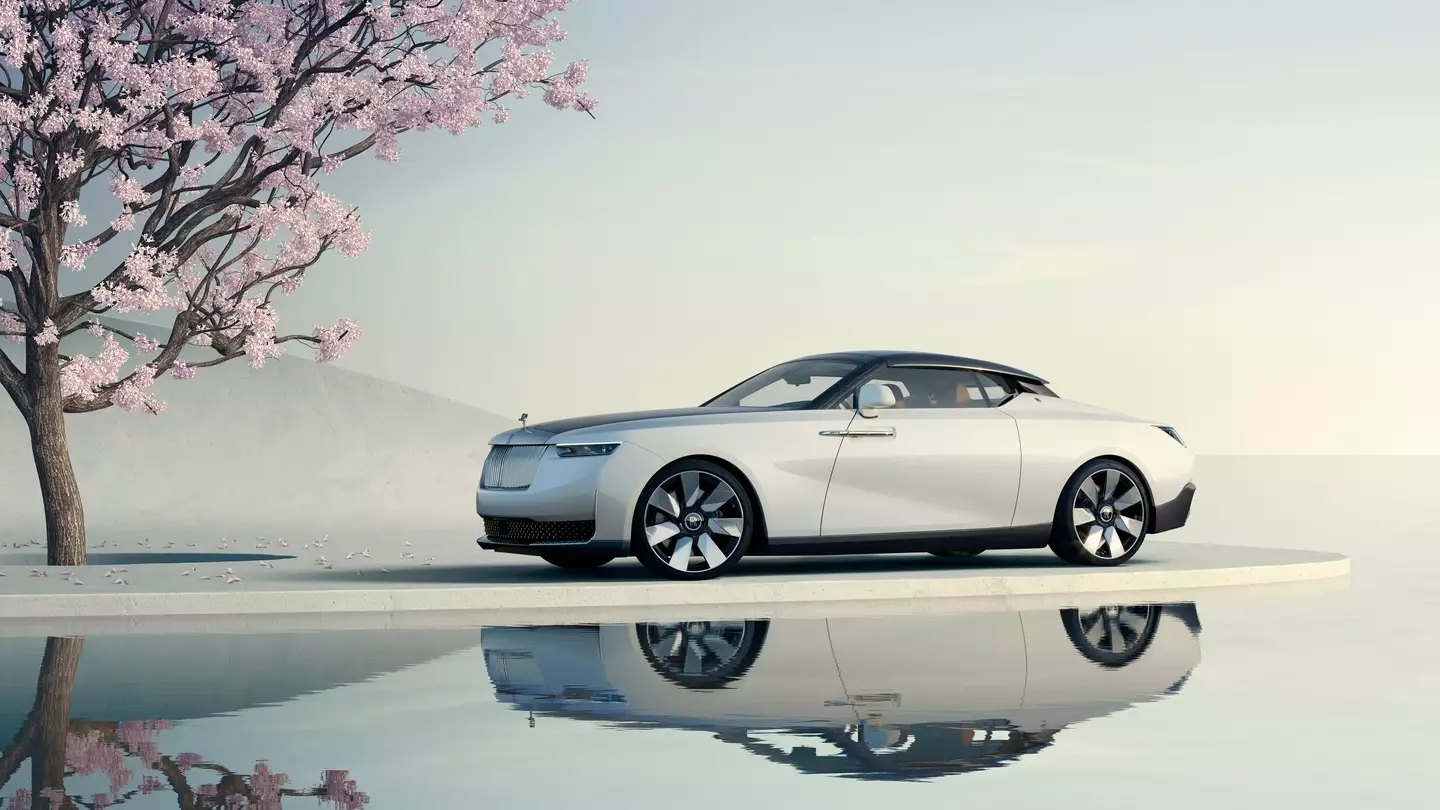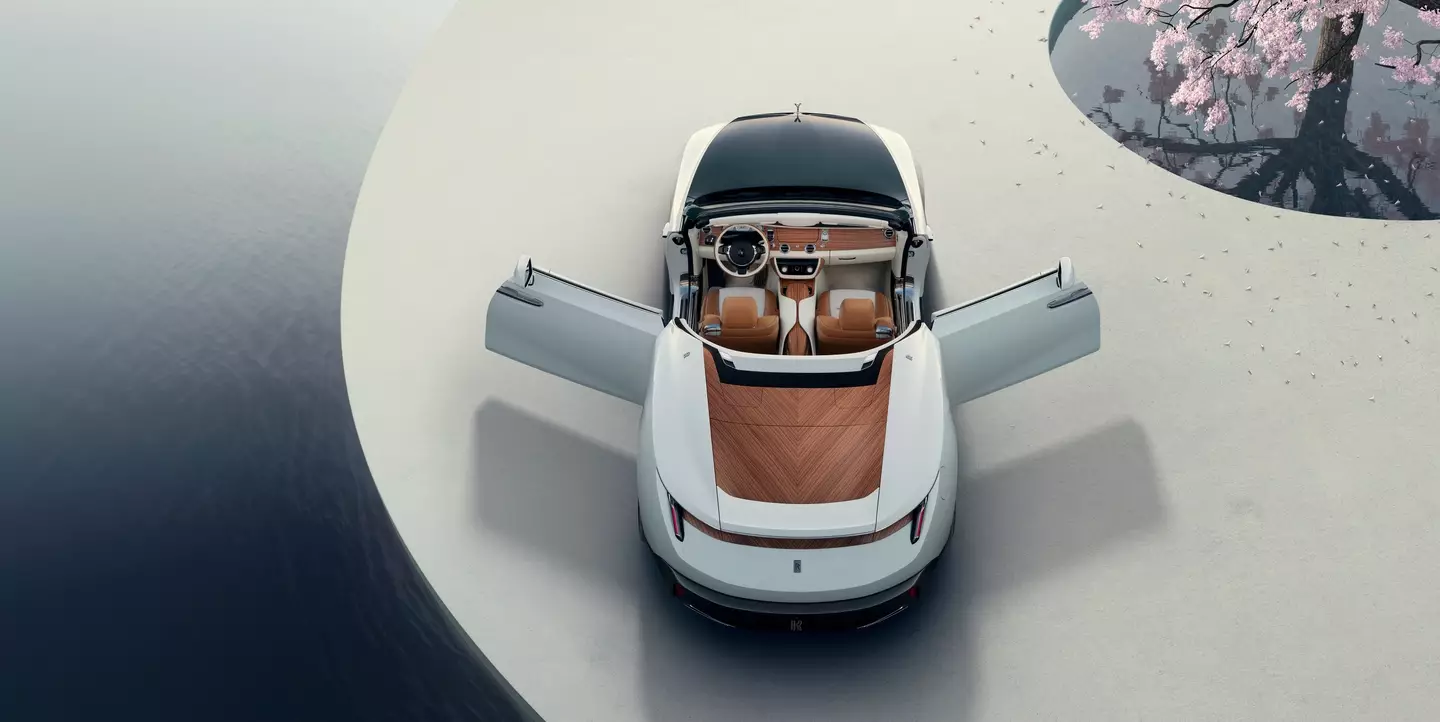
It’s not your usual vending machine lineup, but there is a place out there that offers these latter options, if you’re up for handing over thousands of dollars.
Located in Singapore, the 15-storey, 148-foot machine was introduced to the world in 2017 by used car seller Autobahn Motors, which stocked it full of models from the Lamborghini Aventador to collectible cars such as the Ferrari 512M.

The huge machine can house up to 60 cars (ROSLAN RAHMAN/AFP via Getty Images)
The machine can hold up to 60 cars at a time, and if you’re walking past and just so happen to find yourself in the mood for some new wheels, all you have to do is flick through the touch screen to find the one you want.
Luckily, you don’t need change to use the machine – you’d have very heavy pockets if you did – and it doesn’t just push the expensive cars off their shelf, leaving them to tumble down the levels like a usual vending machine would.
Instead, the cars are delivered safely to the buyer within one or two minutes, during which time the customer is shown a video of their chosen car, and Autobahn Motors staff members supervise the situation the whole time.
You’re not stuck with your option, either. If you’re not 100 percent sure about the car you want to buy, the machine also allows opportunities for vehicles to be viewed or taken for a test drive before you bite the bullet.
If only it worked the same way with candy bars.

Customers can get a new car in minutes (ROSLAN RAHMAN/AFP via Getty Images)
Gary Hong, general manager for Autobahn Motors, told CNN Money in 2017 that the vision for the giant vending machine came from a display of Matchbox cars he saw while visiting a Toys R Us store with his young son.
Recognizing how the creation could save space while still allowing for a business in Singapore, where land is tough to come by, Hong said: “We decided to build something a bit different to solve the problem.”
Speaking to Reuters, he added: “We needed to meet our requirement of storing a lot of cars. At the same time, we wanted to be creative and innovative.”
Though it’s believed to be the world’s tallest ‘car vending machine’, the machine in Singapore isn’t the only one of its kind.
Other car vending machines exist in other places across the globe, including the US and Japan.
The only question is, which button are you going to push?

There are dozens of high-end, luxury car manufacturers across the globe, but I think we can all agree that Rolls-Royce is up there as one of the best.
Rolls-Royce previously held the title of the world’s most expensive car for its Boat Tail, which is believed to have retailed at an eye-watering $29 million.
Now Rolls-Royce has released its Arcadia Droptail, and is only making four Droptails in total.
Previous Dropstails were said to retail around $30 million, so it’s likely the Arcadia is a similar price bracket.
The car comes as the third Droptail commission of four for the manufacturer, and is described as an ‘exquisite expression of tranquillity’.

Rolls-Royce
“The hand-built roadster celebrates purity of form and natural materials while serving as a bold statement of the commissioning client’s personal tastes, defined by precision and subtle restraint,” Rolls-Royce’s website states.
Sketches for the mystery buyer were first drawn up in 2019 and, like the drawing, the wealthy individual wanted the Droptail to have ‘deeply resonated with the roadster profile, low stance, and dramatic body lines’.
Rolls-Royce (of course) hasn’t revealed who the buyer is, but it’s believed that the person who commissioned the car is a Singapore-based billionaire.

Rolls-Royce
While the Arcadia’s predecessors are both a shade of red (the La Rose Noire Droptail) and purple (the Amethyst Droptail), the Arcadia Droptail is a sleek shade of white with 22-inch mirror-polish alloy wheels.
One of the key features of the interior of the Arcadia Droptail is its dashboard clockface, which took them a staggering five months to assemble.
It’s been hailed as ‘the most complex Rolls‑Royce clock face ever created’.
If the aesthetics of the car wasn’t enough for you, the Arcadia also packs a punch speed wise and boasts twin-turbocharged 6.6-liter V12, which is capable of producing 593 horsepower and 620 pound-feet of torque.

Rolls-Royce
Speaking about the mechanical work of art, Chris Brownridge, Chief Executive at Rolls-Royce, said of the Arcadia: “Arcadia Droptail is deeply connected to the client’s personality and preferences, and in capturing their character, we have been empowered to make inspiring design, craft, and engineering statements that show the world our ambition and unparalleled abilities.”
I wonder what the fourth and final Droptail will look like, and who will be the lucky person to have commissioned it…

More and more cities across the world are adopting autonomous cars, including Shenzhen and Wuhan in China, Stockholm in Sweden and Hwaseong in South Korea.
Meanwhile, across the US, Waymo – formerly the Google self-driving car project – has been operating commercial robotaxi services in Los Angeles and San Francisco, with operations expanding to Austin, Texas.
The benefits of utilizing these automobiles reportedly include greater independence for elderly people, the chance of investment and the creation of new jobs, as well as filling the gaps where public transit can’t. And according to research conducted by the University of Central Florida, another benefit is that they are considered safer than cars driven by actual humans – except in three circumstances.
Researchers Mohamed Abdel-Aty and Shengxuan Ding have reportedly discovered that self-driving vehicles have been involved in fewer road accidents compared to those manned by people.
The pair pulled together data from California and the National Highway Traffic Safety Administration (NHTSA) and came up with the results by analyzing and comparing accident data from 2016 to 2022.
After looking at 2,100 reports involving autonomous vehicles and 35,133 human-driven vehicles, they used a statistical matching method to find accidents akin to one another. These factors included road conditions, weather and time of day, according to New Scientist.
Overall, the study found that self-driving vehicles were safer than those piloted by humans due to it being less likely for them to be involved in a road accident.
The results further suggested that the cars ‘generally demonstrate better safety in most scenarios’. It was also found they were safer when hit from behind or from the side.
.jpg)
Self-driving cars are said to be safer than those manned by humans, except in three circumstances (Mario Tama/Getty Images)
When are self-driving cars not safer than those driven by humans?
While the research is mainly in favor of self-driving cars, the study leads discovered that they didn’t excel in three circumstances.
The first was when they were operating at both dawn and dusk.
Analysis found self-driving cars had a crash risk ‘five times as great as human drivers when operating at dawn and dusk’.
The third instance that these vehicles were behind was when making turns, with research claiming autonomous cars had double the accident rate of human drivers while making turns

Experts have warned against ‘biased’ accident reporting (Mario Tama/Getty Images)
What do experts say about the study results?
Abdel-Aty claimed that results could be slightly unreliable due to the ‘autonomous vehicle accident database is still small and limited’.
Missy Cummings of George Mason University has since warned of ‘biased reporting’ from self-driving car companies while stating the research serves as ‘an interesting but extremely preliminary step towards measuring autonomous vehicle safety’.
Overall, it appears more accident data is needed to truly confirm that self-driving cars are safer than those manned by humans—but this research appears to be a step in the right direction.

Fast-forward 50 years and you’ll see one of these gadgets in the utility room of every house right next to the clothes washing machine and dryer – it’s weird that I’ve had to differentiate them in that way- along with an iron and ironing board.

Will we be getting into washing machines with our clothes on in the future? (Getty stock)
It will be the first time you and I have ever heard of a human washing machine, but more than 50 years ago, back in 1970 Japan, an egg-shaped pod dubbed the ‘Ultrasonic Bath’ was created that filled up with warm water when someone stepped in – it even gave massages.
The original machine was created by Panasonic Holdings Corp, formerly known as Sanyo Electric Co., but despite its genius, it never became mainstream.
Now, the chairman of Science Co., Yasuaki Aoyama, has revisited the design and given it a 21st century upgrade with the latest technological advances.
The Osaka-based showerhead maker has readied it for the same exhibition that it featured in the first time, and it clearly left a lasting impression on Aoyama who dreamt of making it throughout his childhood.
Yes, Aoyama will exhibit the ‘Mirai Ningen Sentakuki’, which translates to human washing machine of the future, in April and plan to demonstrate how it works… that is of course when it is all completed.
“We’re about 70 percent there,” he said.

The human washing machine has been created by Japanese firm Science Co. (Science Co.)
“We plan to offer 1,000 general visitors an opportunity to use it during the expo,”
with around seven to eight people being offered the experience to have a full ‘wash-and-dry’ in the pod each day.
So, how does it all work?
Much-like the old device, when someone steps inside the pod and sits down in its seat it begins to fill with hot water. Sensors in the seat will measure the participants pulse, and other bodily data, so that the wash is an appropriate temperature for them.
Then an AI system determines if the user is excited or calm and projects images on the transparent cover to help them feel refreshed.
Speaking to The Asahi Shimbun about the former washing machine and his company’s take on it, Aoyama said: “It made me excited, thinking about what kind of future there would be.
“We will offer a new human washing machine as a legacy from the 1970 expo.”


